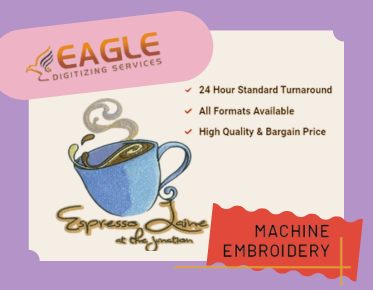Key Strategies for Cost Control and Increasing Profits in Embroidery Digitizing
Embroidery digitizing is a crucial aspect of the textile and apparel industry, offering a bridge between creative design and practical application. As the demand for personalized and custom embroidery grows, businesses in this sector must focus on cost control and profit maximization to remain competitive. Here, we explore some key strategies that can help embroidery digitizing companies achieve these goals.
Understanding the Cost Structure
Before implementing cost control measures, it's essential to understand the cost structure of embroidery digitizing. This includes the costs of software, skilled labor, machine maintenance, and materials. By analyzing these components, businesses can identify areas where costs can be reduced without compromising quality.
Investing in Technology
One of the most effective ways to control costs is by investing in the latest embroidery digitizing software and machinery. Advanced technology can increase efficiency, reduce errors, and minimize waste. For instance, automated machines can handle complex designs with precision, reducing the need for manual intervention and thus lowering labor costs.
Optimizing Workflow
Streamlining the workflow is another critical strategy. This involves organizing the production process to minimize downtime and ensure that each step is completed efficiently. Implementing a robust project management system can help track progress and identify bottlenecks in the process.
Training and Development
Investing in the training and development of employees can lead to significant cost savings. Skilled workers are more efficient and produce higher quality work, which reduces the need for costly revisions and rework. Regular training sessions can keep employees updated on the latest techniques and technologies in embroidery digitizing services.
Supplier Relationships
Building strong relationships with suppliers can lead to better pricing and terms. By negotiating bulk purchase agreements or long-term contracts, businesses can secure discounts on materials and supplies. This not only reduces costs but also ensures a steady supply of high-quality materials.
Quality Control
Implementing a stringent quality control process can prevent defects and reduce waste. By catching errors early in the production process, businesses can avoid the costs associated with rework and customer returns. Quality control also enhances customer satisfaction, leading to repeat business and positive word-of-mouth.
Pricing Strategy
Developing a competitive pricing strategy is crucial for maximizing profits. This involves analyzing market trends, understanding customer needs, and setting prices that reflect the value of the service provided. Offering tiered pricing or package deals can attract a broader range of customers and increase sales volume.
Leveraging Digital Marketing
Effective marketing can significantly impact profitability. Utilizing digital marketing strategies such as social media, SEO, and email campaigns can increase brand visibility and attract new customers. Highlighting unique selling points, such as quick turnaround times or specialized services, can differentiate a business from its competitors.
Exploring New Markets
Expanding into new markets can provide additional revenue streams. This could involve targeting different industries, such as promotional products or corporate gifts, or exploring international markets. Understanding the needs and preferences of these new customer segments is essential for success.
Continuous Improvement
Finally, fostering a culture of continuous improvement can lead to long-term success. Encouraging feedback from employees and customers can provide valuable insights into areas for improvement. Regularly reviewing processes and implementing changes based on this feedback can enhance efficiency and profitability.
The Role of Eagle Digitizing
Eagle Digitizing exemplifies many of these strategies in action. With over 25 years of experience, they offer high-quality digitizing services with a focus on efficiency and customer satisfaction. Their commitment to quick turnaround times and skilled digitizers ensures that clients receive top-notch service without unnecessary delays or costs. By continuously updating their techniques and maintaining a customer-centric approach, Eagle Digitizing remains a leader in the industry.
Looking Ahead
As the embroidery digitizing industry continues to evolve, businesses must remain agile and responsive to changes. Embracing new technologies, optimizing operations, and focusing on customer satisfaction will be key to thriving in this competitive landscape. By implementing these strategies, embroidery digitizing companies can control costs, increase profits, and secure their place in the market for years to come.
What strategies do you think will shape the future of embroidery digitizing? How can businesses continue to innovate and meet the changing demands of their customers? The answers to these questions will determine the trajectory of the industry in the coming years.



